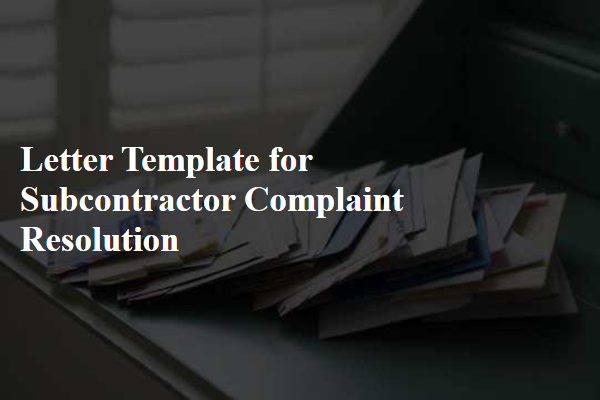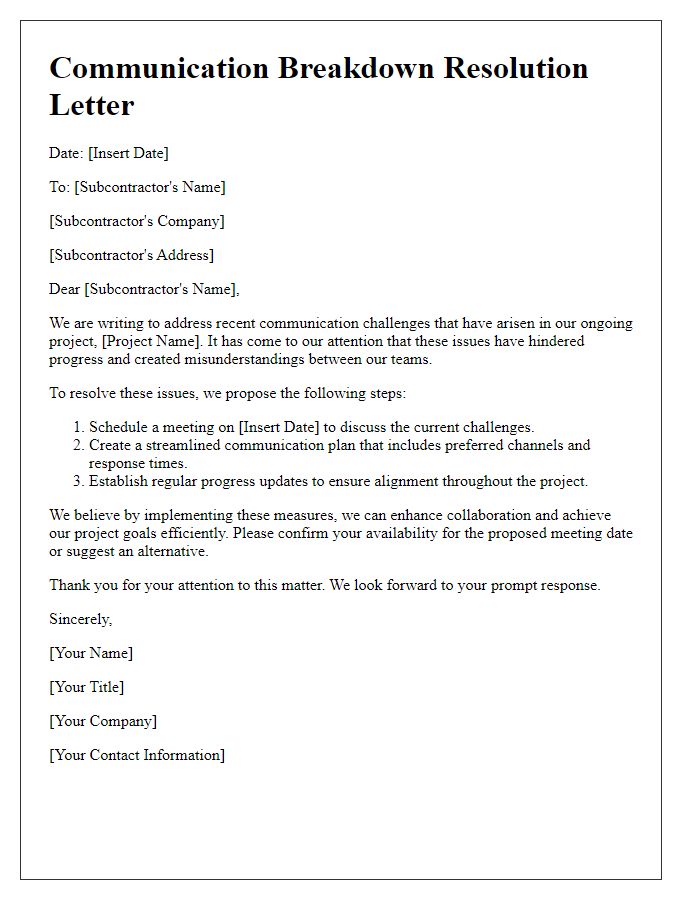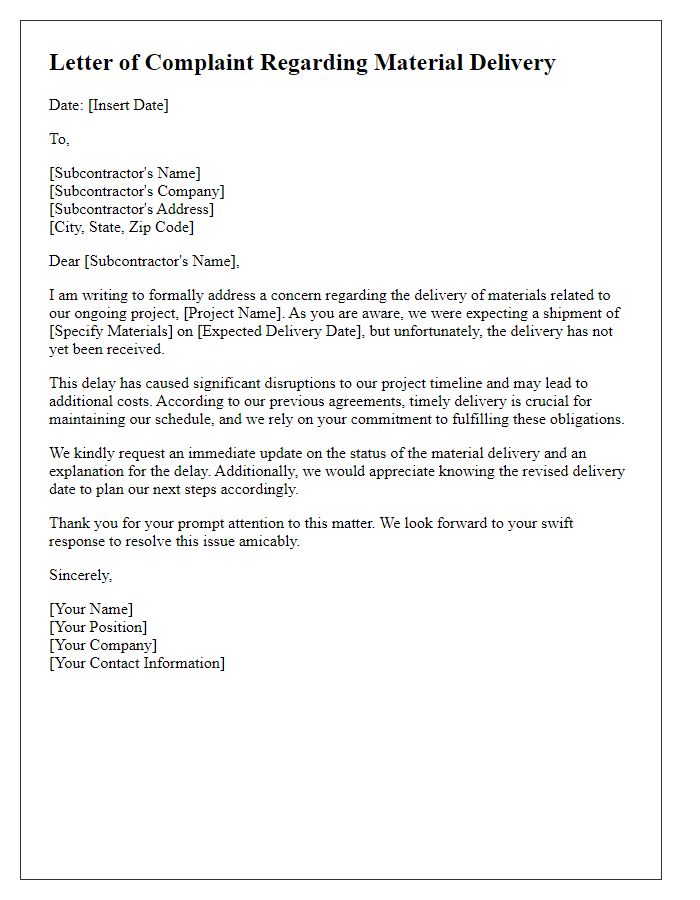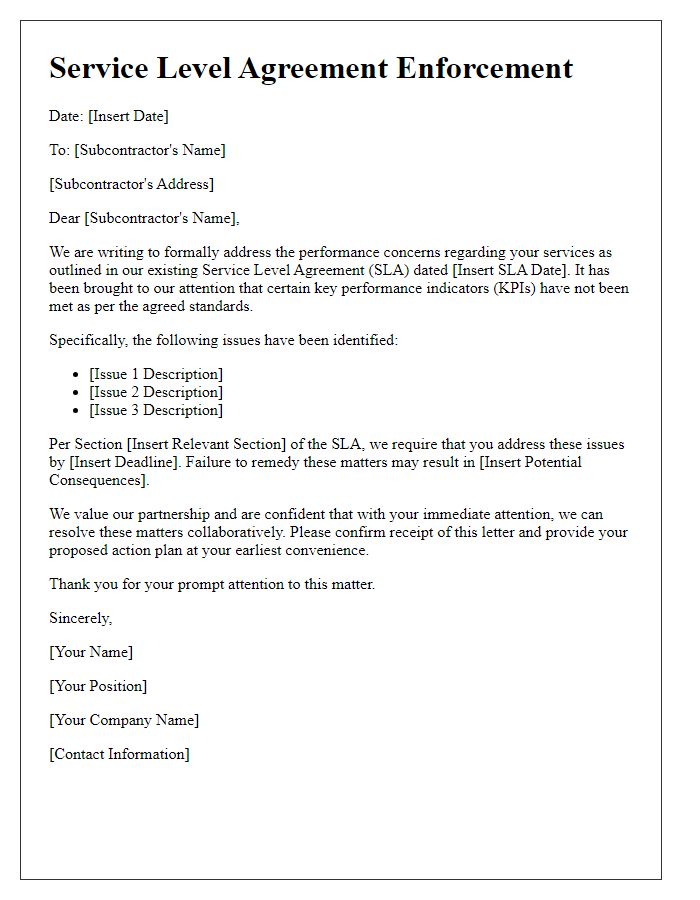Are you navigating the tricky waters of subcontractor complaints? Finding a resolution can often feel overwhelming, but it doesn't have to be. In this guide, we'll break down the essential steps you need to take to address and resolve issues effectively. So, if you're ready to transform your subcontractor relationships, keep reading for practical tips and insights!

Clear description of the issue
A subcontractor delay in project completion has been affecting the overall timeline of the construction site located at 123 Maple Avenue, Springfield. The original deadline, set for March 15, 2023, has passed without substantive progress, leading to increased costs estimated at $5,000 due to subsequent scheduling adjustments. Furthermore, safety standards have been compromised, with inadequate barriers remaining in place, posing risks to onsite workers. The lack of communication surrounding these delays has further frustrated coordination with other teams, such as electricians and plumbers, requiring urgent remediation to restore workflow efficiency and project integrity.
Relevant contract references
The subcontractor complaint resolution process often hinges on key contract references that define roles, responsibilities, and dispute resolution protocols. In construction contracts, such as the AIA A201 or the ConsensusDocs 750, clauses related to breach of contract typically govern complaint procedures. These sections outline necessary notice periods, which may range from three to ten days depending on contract terms, ensuring that grievances are formally documented. Additionally, references to performance standards, such as the NFPA 70E for safety practices or ISO 9001 for quality management, provide benchmarks for evaluating compliance. The dispute resolution clauses, often specifying mediation or arbitration processes, establish frameworks for resolving conflicts efficiently, maximizing project continuity and minimizing downtime on sites like commercial buildings or residential developments.
Impact assessment on project timeline
Delays caused by subcontractor inefficiencies can significantly impact the overall project timeline. For instance, when a subcontractor in the construction sector fails to deliver materials on time, it can result in a domino effect, delaying subsequent phases such as foundation work and electrical installations. These delays may extend the completion date, pushing it beyond pre-established deadlines, potentially incurring penalties or loss of future business opportunities. Furthermore, resource allocation may become misaligned, leading to increased costs due to overtime labor required to catch up on project milestones, which were initially set to adhere to a strict timeline. Properly addressing these issues through an effective complaint resolution process is essential to maintain project integrity and client satisfaction.
Proposed resolution or corrective actions
When faced with subcontractor issues, implementing effective resolution strategies is crucial. Proposed corrective actions should include a performance audit to assess adherence to specifications, focusing on time delays encountered during project phases. An in-depth review of contract terms, particularly relating to scope of work and payment schedules, ensures clarity. Regular progress meetings for transparency and accountability can facilitate open communication. Establishing a corrective action plan, with clearly defined timelines and responsibilities, allows for systematic resolution. Additionally, providing training workshops can enhance subcontractor skills relevant to project requirements, fostering future compliance and efficiency.
Contact information for further discussion
In a subcontractor complaint resolution scenario, clear communication is essential for addressing issues efficiently. Contact information should include the name of the primary liaison, position within the company, phone number (preferably a direct line or mobile), and an email address for swift correspondence. Additional options for contact, such as a fax number or office address, may provide further avenues for formal resolution discussions. Providing business hours ensures that subcontractors know when they can expect timely responses. Such organized contact details facilitate prompt discussions and enhance the likelihood of a satisfactory resolution to any disputes that arise.













Comments